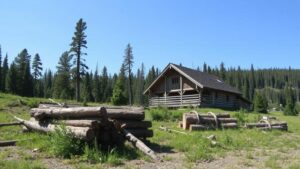Researching Historic Gold Rush Maps for Untapped Veins
Researching Historic Gold Rush Maps for Untapped Veins
The Gold Rush era, predominantly spanning the mid to late 19th century, serves as a hallmark of American history. The excitement and economic development it fueled have continued to inspire modern exploration efforts. This article presents a systematic exploration of historic gold rush maps as tools for identifying untapped veins of gold, examining their historical significance, methodologies for research, and implications for contemporary mining practices.
Historical Context of the Gold Rush
The California Gold Rush began in 1848, following the discovery of gold at Sutters Mill in Coloma, California. This event triggered a massive influx of fortune seekers, known as 49ers, leading to the rapid settlement and economic development of the West. By 1852, Californias gold production peaked at approximately $81 million (equivalent to over $2.5 billion today), establishing a foundational economic structure that continues to influence mining today.
Other significant Gold Rush events occurred in locations such as:
- Alaska (1896 with the Klondike Gold Rush)
- Colorado (1858 with the Pikes Peak Gold Rush)
- Australia (1851, resulting in a significant influx of migrants)
The Role of Historic Maps
Historic maps created during the Gold Rush era provide not only visual representations of mining activities but also insights into the geological formations associated with gold deposits. These maps often include notes, legends, and markings that indicate the locations of successful mining sites, as well as areas deemed less productive. Compared to modern geophysical surveys, these maps can uncover previously overlooked evidence of mineralization.
Methodologies for Researching Historic Maps
To effectively utilize historic maps in exploration, researchers employ several methodologies:
- Archival Research: Exploring libraries, state archives, and local historical societies for original maps and documentations.
- Digital Mapping Techniques: Utilizing geographic information systems (GIS) to overlay historic maps with current geological surveys and mineral data.
- Field Verification: Conducting field studies in the areas marked on historic maps to analyze geological compositions and potential gold deposits.
Case Study: The Grass Valley Mining District
The Grass Valley Mining District in California is an exemplary case highlighting the value of historic maps. During the Gold Rush, this region was credited with significant production, yielding upwards of $100 million in gold (about $3 billion today). Maps from this period indicated both major and minor gold production sites, some of which had been abandoned or overlooked in later years.
A recent study utilizing both historic maps and modern GIS technology identified several potential untapped veins in the Grass Valley area. By cross-referencing historic mining claims and geological data, researchers pinpointed high-potential exploration sites that remain unexamined, demonstrating the value of these maps in modern mining efforts.
Contemporary Applications
Researchers and mining companies can apply findings from historic map analysis in several ways:
- Enhanced Exploration Strategies: Integrating findings from historic maps with contemporary data allows for more strategic mining efforts, minimizing costs and maximizing yields.
- Environmental Considerations: By understanding historical mining impacts, modern companies can implement better environmental stewardship practices.
- Public Heritage and Education: Engagement with the historical context enhances public education and appreciation for mining heritage, promoting responsible mining practices.
Challenges and Limitations
Despite the advantages of using historic maps, challenges exist. Inaccuracies may arise from poor data collection methods of the past, and degradation of map materials can hinder usability. Also, reliance on historic methods may conflict with contemporary mining regulations and environmental standards.
Conclusion
Researching historic gold rush maps offers a valuable conduit for discovering untapped veins of gold. interplay between historical documentation and modern exploration techniques creates opportunities for both profitable mining endeavors and responsible resource management. As ongoing research and technology continue to evolve, the insights derived from these maps are likely to offer even greater benefits to the mining industry and contribute to a comprehensive understanding of the historical and geological legacy of the Gold Rush.
Actionable Takeaways
For mining professionals and researchers interested in optimizing their exploration methods:
- Engage in archival research to obtain historic gold rush maps relevant to your target area.
- Employ modern GIS technology to analyze data and correlate historic map findings with contemporary geological information.
- Conduct field studies to verify potential mining sites and assess mineral deposits, informed by historical records.



